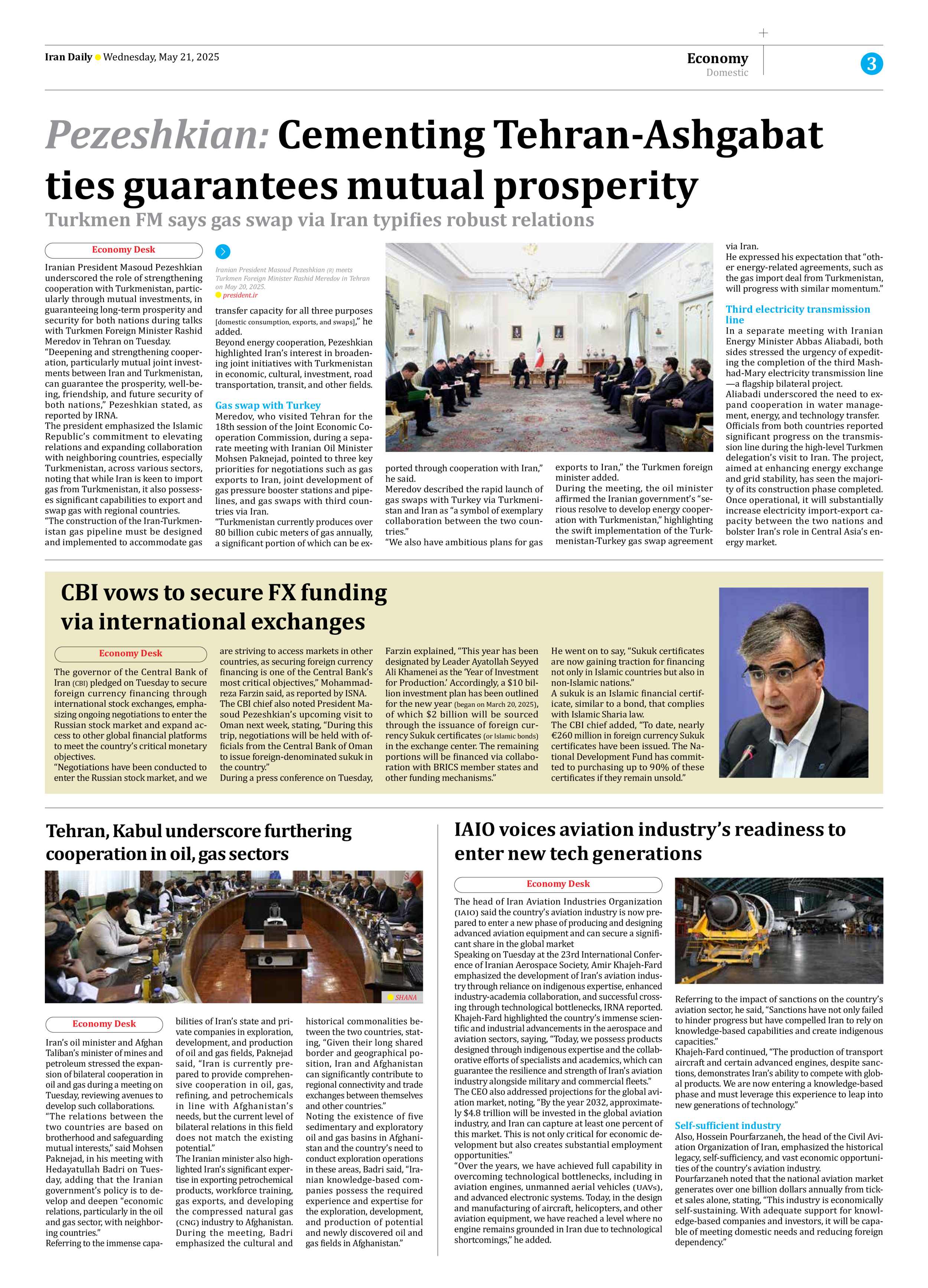
IAIO voices aviation industry’s readiness to enter new tech generations
The head of Iran Aviation Industries Organization (IAIO) said the country’s aviation industry is now prepared to enter a new phase of producing and designing advanced aviation equipment and can secure a significant share in the global market
Speaking on Tuesday at the 23rd International Conference of Iranian Aerospace Society, Amir Khajeh-Fard emphasized the development of Iran’s aviation industry through reliance on indigenous expertise, enhanced industry-academia collaboration, and successful crossing through technological bottlenecks, IRNA reported.
Khajeh-Fard highlighted the country’s immense scientific and industrial advancements in the aerospace and aviation sectors, saying, “Today, we possess products designed through indigenous expertise and the collaborative efforts of specialists and academics, which can guarantee the resilience and strength of Iran’s aviation industry alongside military and commercial fleets.”
The CEO also addressed projections for the global aviation market, noting, “By the year 2032, approximately $4.8 trillion will be invested in the global aviation industry, and Iran can capture at least one percent of this market. This is not only critical for economic development but also creates substantial employment opportunities.”
“Over the years, we have achieved full capability in overcoming technological bottlenecks, including in aviation engines, unmanned aerial vehicles (UAVs), and advanced electronic systems. Today, in the design and manufacturing of aircraft, helicopters, and other aviation equipment, we have reached a level where no engine remains grounded in Iran due to technological shortcomings,” he added.
Referring to the impact of sanctions on the country’s aviation sector, he said, “Sanctions have not only failed to hinder progress but have compelled Iran to rely on knowledge-based capabilities and create indigenous capacities.”
Khajeh-Fard continued, “The production of transport aircraft and certain advanced engines, despite sanctions, demonstrates Iran’s ability to compete with global products. We are now entering a knowledge-based phase and must leverage this experience to leap into new generations of technology.”
Self-sufficient industry
Also, Hossein Pourfarzaneh, the head of the Civil Aviation Organization of Iran, emphasized the historical legacy, self-sufficiency, and vast economic opportunities of the country’s aviation industry.
Pourfarzaneh noted that the national aviation market generates over one billion dollars annually from ticket sales alone, stating, “This industry is economically self-sustaining. With adequate support for knowledge-based companies and investors, it will be capable of meeting domestic needs and reducing foreign dependency.”







